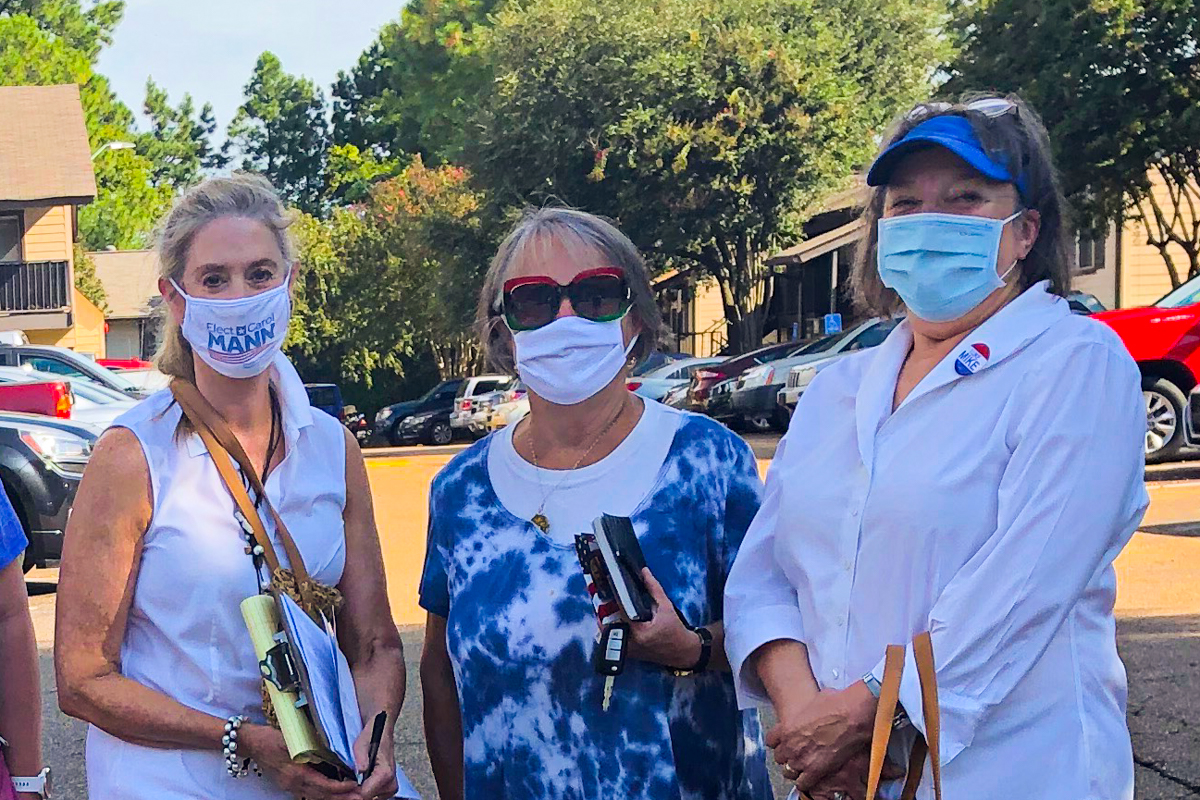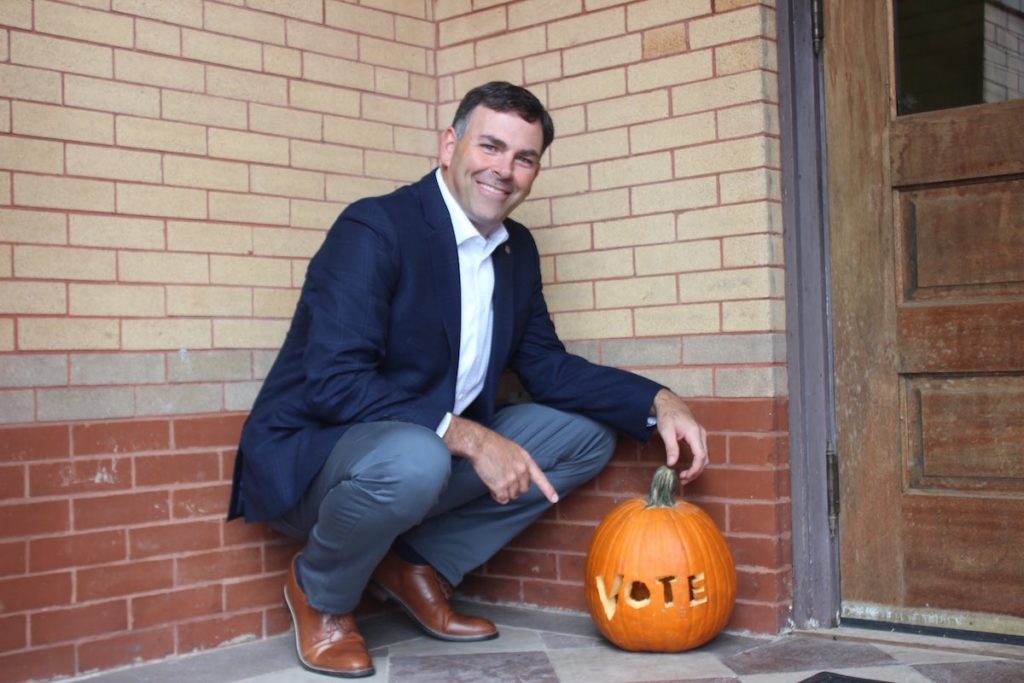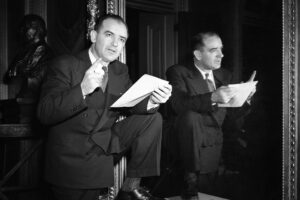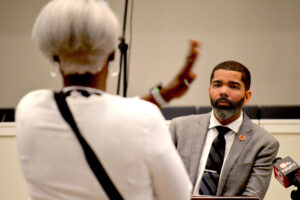Since May, local officials in Mississippi have changed polling-place locations for at least 55 precincts—more than triple the 17 precinct changes that Mississippi Secretary of State Michael Watson announced last week.
The changes mean that about 65,000 Mississippi voters will vote in a different location on Election Day than where they would have cast their ballot during the March party primaries just this past spring. The changes affect some voters who have voted in the same location for more than a decade.
It is up to local county officials, who are in charge of deciding precinct locations, to notify the secretary of state’s office of precinct changes. A full list of changes the Mississippi Free Press identified is included at the end of this article.
“We months ago started telling our precincts, our circuit clerks, to make sure if you think there’s going to be a change to let us know in advance,” Watson said during an Oct. 27 press conference, in which he said he was only aware of the 17 precinct changes posted at sos.ms.gov/vote.
The Mississippi Free Press found discrepancies between the numbers the secretary of state officially released on Oct. 27 and reports from voters who said their precincts had changed but were not on Watson’s list. MFP reported on the list last week, which cited changes in only a dozen counties.
Precinct Changes in 27 Counties
The Mississippi Secretary of State’s office provided the MFP with a 165-page document from the Statewide Election Management System that includes a list of all precincts and their current location statewide as of Oct. 30. The MFP analyzed the document by comparing it to a similar SEMS report from May to identify the unannounced changes.
The analysis, which this publication conducted as part of the Mississippi Trusted Elections Project, identified 27 counties that changed one or more polling-place locations since May.
Among those counties, the following 15 did not appear on the list the secretary of state released last week: Attala, Choctaw, Copiah, Forrest, Kemper, Lauderdale, Lowndes, Madison, Marshall, Prentiss, Tippah, Webster, Wilkinson, Winston and Yazoo.
Harrison, Hinds, Lee and Noxubee counties each reported at least one precinct change to the secretary of state’s office, but the MFP analysis found other polling-place changes in those counties that were not included on the secretary of state’s list.
All precinct changes identified in the SEMS report for Chickasaw, Greene, Lafayette, Leake, Marion, Simpson, Stone County and Sunflower counties were previously announced in the secretary of state’s Oct. 27 list.
In some cases, county officials appear to have notified local news organizations about the changes, who reported them, without notifying the secretary of state’s office for inclusion on the Oct. 27 list.
In other cases where county election officials did not publicize precinct changes the Mississippi Free Press identified in the SEMS report, local media organizations have continued to direct voters to now-defunct polling locations based on publicly available information.
Some Counties Made Errors or Failed to Update SEMS Report
Kendra James, the communications director for the secretary of state, noted that the information in the SEMS report only reflects what county officials have entered into the system and is not vetted by the secretary of state’s office. The secretary of state’s office is not notified when changes are made.
The Mississippi Free Press found several errors in the data that counties submitted to SEMS, most of them from Hinds County, which includes the capital city, Jackson. On Oct. 28, the day after Watson released his list of statewide precinct changes, Hinds released a list of polling-location changes to several local outlets not included in Watson’s list.
By Oct. 30, though, Hinds had not updated SEMS to reflect new locations and addresses for four polling places that have moved: Precinct 46, Precinct 54, the Utica 1 Precinct and the Edwards precinct.
The MFP identified one Hinds precinct change on the SEMS report that was not included on the secretary of state’s Oct. 27 list nor among those local outlets reported on Oct. 28: Precinct 94, which moved from the Higher Ground Family Worship Center to Willowood Community Center.
Lee County also made an error in the SEMS report, which notes that the Tupelo 1 Precinct is now located at American Legion Post #49, but still lists the address for the old location, the Bel-Air Center.
Such errors could easily send voters to the wrong polling place. While SEMS data is not publicly accessible, the secretary of state’s polling-place locator tool uses SEMS to inform voters where their polling place is located. After a voter inputs their address, the polling-place locator gives them the precinct information stored in SEMS.
If voters in the erroneous Lee and Hinds precincts use the tool, though, it would give them the wrong location and address unless county election officials update it. These errors are corrected in the Mississippi Free Press’ map and chart of precinct changes.
Residents Accuse Madison County of ‘Voter Suppression’
At his press conference last week, Secretary Watson advised voters to contact their local officials to make sure they know where to vote.
“The Board of Supervisors (in each county) choose where the precincts are located. Once they do that, they are supposed to mail out or notify their voters,” he said. “But also, if a precinct moves, they need to make sure there is clear notice at the old precinct, so if someone shows up, they know where to go. Make sure you’re talking to your circuit clerks and your commissioners and the secretary of state’s office.”
In one Madison County election district, though, several voters told the Mississippi Free Press late last week that local officials did not notify them after changing their polling place and that the county had not put up signs making them aware.
Instead of moving the precinct, though, Madison officials changed precinct boundaries, moving about 2,500 mostly non-white voters out of a majority-white precinct and into an already majority-Black precinct with fewer parking spaces and fewer voting machines. The precinct that officials zoned them out of, which now has about the same number of voters as the one they were moved to, has hundreds of parking spaces and twice as many voting machines.

This publication broke that story Thursday evening after Carol Mann, an election commissioner candidate in that district, discovered the change while canvassing and alerted this publication.
“I’ve heard that from many people who say they know this was about voter suppression, but that they’re going to stand in line all day if they have to,” she told the Mississippi Free Press.
One voter affected by the Madison County precinct change, who asked to remain anonymous, shared a photo yesterday of a sign that went up in her neighborhood, alerting voters about the change. The county did not put out the signage, though; instead, three voting rights groups paid for it: the NAACP, the League of Women Voters and Common Cause.
The voter who sent the photo told the Mississippi Free Press that she has been concerned about the precinct change for months and repeatedly tried to reach out to the local circuit clerk and election commissioners to ask questions about it, but has been unable to get in touch with anyone.
The circuit clerk’s office did not answer repeated calls from this publication, and District 1 Election Commissioner Helen Carney directed this reporter to speak to the board’s attorney, Spence Flatgard, who also did not return calls (though he did later give a short interview to WJTV the day after the MFP’s story published).
‘The Government That is Closest’
On Twitter, Watson responded to the news yesterday by noting that Mississippi elections are not centralized under his office.
“Our office has no authority to relocate polling places. That’s a decision made at the local level. Each county’s Board of Supervisors is responsible for locating and/or relocating precincts,” he tweeted.
At last week’s press conference, he defended that system. When asked if he would support a “more centralized election process,” he said, “absolutely not.”
“I’m a firm believer in the idea that a government that is closest to the people is government that governs best,” he said on Oct. 27.
The election is on Nov. 3. Mississippi voters must arrive at their polling places with a valid form of photo ID to cast a ballot. Mississippi State Health Officer Dr. Thomas Dobbs has advised voters to wear masks amid the COVID-19 pandemic, though election officials are only requiring them for poll workers. More information on voting is available at sos.ms.gov/vote.
This story is part of the MFP’s Mississippi Trusted Elections Project, focusing on access to the polls and voting access in Mississippi. Visit the site to view several infographics and continually updated maps of voting precincts, absentee vote totals and precinct changes across Mississippi, created by William Pittman who also did data analysis for the above report. The American Press Institute provided funding for this work.










